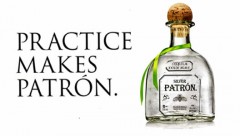Best of Neuromarketing – 2015

Here’s our year end “top” list. As usual, we’ve let reader shares and overall views do most of the work in picking these. One could argue that there were other posts that were just as good, but we’ve got the smartest readers at Neuromarketing so we’ll go with their choices. Here’s the Best of Neuromarketing for 2015!
The Best of #Neuromarketing, 2015. #CRO, #UX, #neuroscience, more! pic.twitter.com/p3JtIHP13z Share on X
67 Ways to Increase Conversion with Cognitive Biases
 Our most read and shared post this year was from guest author Jeremy Smith, who created a massive compilation of human biases and then suggested how a clever marketer might use each one… Do you know about the ambiguity effect, the availability heuristic, negativity bias, and the Zeigarnik effect? These and dozens of others are in this post! Read more: 67 Ways to Increase Conversion with Cognitive Biases
Our most read and shared post this year was from guest author Jeremy Smith, who created a massive compilation of human biases and then suggested how a clever marketer might use each one… Do you know about the ambiguity effect, the availability heuristic, negativity bias, and the Zeigarnik effect? These and dozens of others are in this post! Read more: 67 Ways to Increase Conversion with Cognitive Biases
Magic Math: You Can Double Your Results in 43 Days
 How would it change your business if you could get twice the leads, subscriptions, or sales from your website? Believe it or not, you can accomplish that goal in less time than you expect and without spending lots of money. The strategy isn’t one of bold, dramatic change. Rather, it’s a strategy composed of small wins that stack up to produce big gains…
How would it change your business if you could get twice the leads, subscriptions, or sales from your website? Believe it or not, you can accomplish that goal in less time than you expect and without spending lots of money. The strategy isn’t one of bold, dramatic change. Rather, it’s a strategy composed of small wins that stack up to produce big gains…
Read more: Magic Math: You Can Double Your Results in 43 Days
How To Set The Right Price Every Time
 Exactly how to price products is a big challenge for marketers, but new research provides valuable direction in this complex decision-making process. It isn’t just “big picture” pricing, like establishing margins and an overall price point, that bedevils marketers. There is plenty of research that shows $499.30 is psychologically more distant from $500 than the minuscule real difference.
Exactly how to price products is a big challenge for marketers, but new research provides valuable direction in this complex decision-making process. It isn’t just “big picture” pricing, like establishing margins and an overall price point, that bedevils marketers. There is plenty of research that shows $499.30 is psychologically more distant from $500 than the minuscule real difference.
Read more: How To Set The Right Price Every Time
Is Your New Website Layout Killing Your Engagement?
 There’s a popular new trend in website layouts that may be having the opposite effect its adopters are hoping for. You have probably run across a new breed of sites that are moving away from the old-fashioned vertical page layout. We are seeing this layout more and more as web designers try to stay up-to-date with what they see as important changes in the industry. But how effective is this horizontal layout? [Guest article by Liraz Margalit.]
There’s a popular new trend in website layouts that may be having the opposite effect its adopters are hoping for. You have probably run across a new breed of sites that are moving away from the old-fashioned vertical page layout. We are seeing this layout more and more as web designers try to stay up-to-date with what they see as important changes in the industry. But how effective is this horizontal layout? [Guest article by Liraz Margalit.]
Read More: Is Your New Website Layout Killing Your Engagement?
Neuromarketing Careers
 Are you looking for a career in neuromarketing, or as some prefer to call it, consumer neuroscience? How should you pursue that goal? Is such a goal even a good idea? I’ll try to provide answers, or at least some information that will let you arrive at your own answers. This isn’t a typical post, but it answers many of the questions that I’m asked most often.
Are you looking for a career in neuromarketing, or as some prefer to call it, consumer neuroscience? How should you pursue that goal? Is such a goal even a good idea? I’ll try to provide answers, or at least some information that will let you arrive at your own answers. This isn’t a typical post, but it answers many of the questions that I’m asked most often.
Read More: Neuromarketing Careers
Free To-Do List Apps and Expert Habit Hacks
 I love to-do lists. They really keep you on-task and productive. The only problem is, you have to use them. I’ve tried lots of ways to maintain a to-do list, and most I didn’t stick with in the long run. I’d always start with a burst of enthusiasm, but over time, I’d pay less attention to my list. Eventually, most items on the list would be out of date and instead of using the list I’d be working tasks directly from email or my memory.
I love to-do lists. They really keep you on-task and productive. The only problem is, you have to use them. I’ve tried lots of ways to maintain a to-do list, and most I didn’t stick with in the long run. I’d always start with a burst of enthusiasm, but over time, I’d pay less attention to my list. Eventually, most items on the list would be out of date and instead of using the list I’d be working tasks directly from email or my memory.
Read More: Free To-Do List Apps and Expert Habit Hacks
The 3 Types of Buyers, and How to Optimize for Each One
 The words of guest author Jeremy Smith (yes, he made the top list twice!): I absolutely love buyer psychology and neuroeconomics. Want to know why?
The words of guest author Jeremy Smith (yes, he made the top list twice!): I absolutely love buyer psychology and neuroeconomics. Want to know why?
? Because it’s like a secret weapon that produces torrents of conversions (and money).
? Because it’s the only real way to understand why and how buyers make purchases.
? Because it’s the proven route to successful marketing.
? Because it’s guaranteed to squash the competition.
In this article, I’m going to make things very simple — not because I underestimate your intelligence, but because buyer psychology itself is not complex.
Read More: The 3 Types of Buyers, and How to Optimize for Each One
7 Ways to Engage Your Customer’s Reptilian Brain
 In creating marketing material for your brand or product, you may be asking, “What drives a customer to buy?” and “What initially draws their attention?” According to SalesBrain and the Triune Brain theory, the reptilian region is the brain’s attention gatekeeper and decision maker. If you can grab the attention of a consumer’s reptilian brain with your landing page, advertisement, or commercial, you’ve got a much better chance of guiding them to conversion. [Guest article by Heidi Haskell.]
In creating marketing material for your brand or product, you may be asking, “What drives a customer to buy?” and “What initially draws their attention?” According to SalesBrain and the Triune Brain theory, the reptilian region is the brain’s attention gatekeeper and decision maker. If you can grab the attention of a consumer’s reptilian brain with your landing page, advertisement, or commercial, you’ve got a much better chance of guiding them to conversion. [Guest article by Heidi Haskell.]
Read More: 7 Ways to Engage Your Customer’s Reptilian Brain
How To Write Headlines That Surprise The Brain
 I ran across an ad for Patrón Tequila that, whether they intended it or not, employs a clever tactic based on neuroscience. The ad headline is “Practice Makes Patrón.”
I ran across an ad for Patrón Tequila that, whether they intended it or not, employs a clever tactic based on neuroscience. The ad headline is “Practice Makes Patrón.”
Read More: How To Write Headlines That Surprise The Brain
Print vs. Digital: Another Emotional Win for Paper
 Every year, consumers spend more time using digital devices. Every year, more media is consumed digitally. Naturally, advertising dollars are increasingly flowing to digital as well. But, don’t pull the plug on that direct mail campaign just yet. New research has again shown that content on paper affects our brains in different and more powerful ways.
Every year, consumers spend more time using digital devices. Every year, more media is consumed digitally. Naturally, advertising dollars are increasingly flowing to digital as well. But, don’t pull the plug on that direct mail campaign just yet. New research has again shown that content on paper affects our brains in different and more powerful ways.
Read More: Print vs. Digital: Another Emotional Win for Paper
The Ten Critical Minutes to Close a Deal
 Trying to close a deal? Get a commitment from a big donor? Or, just build a stronger connection with someone? The most critical time for achieving that goal may be the ten minutes before you talk about business. We’re going to combine several research findings into one strategy for closing a deal or reaching any kind of agreement.
Trying to close a deal? Get a commitment from a big donor? Or, just build a stronger connection with someone? The most critical time for achieving that goal may be the ten minutes before you talk about business. We’re going to combine several research findings into one strategy for closing a deal or reaching any kind of agreement.
Read More: The Ten Critical Minutes to Close a Deal
The Wrong Font Can Kill You. Literally. Your Sales, Too.
 Can the font used for important medical instructions affect how well patients follow them? The answer probably won’t surprise regular Neuromarketing readers. A study at the University of Manchester and Leeds Beckett University found that the font used to present medical instructions did indeed affect how those instructions were perceived. The scientists found…
Can the font used for important medical instructions affect how well patients follow them? The answer probably won’t surprise regular Neuromarketing readers. A study at the University of Manchester and Leeds Beckett University found that the font used to present medical instructions did indeed affect how those instructions were perceived. The scientists found…
Read More: The Wrong Font Can Kill You. Literally. Your Sales, Too.
One Small Change That Makes You Seem Smarter and More Competent
 Do you like the sound of your voice? Most people don’t. And, if asked to create a persuasive argument, they would probably opt to write it rather than speak it. That would be a mistake. A new study from Chicago’s Booth School of Business shows that the same information presented in spoken form created a better impression of the speaker.
Do you like the sound of your voice? Most people don’t. And, if asked to create a persuasive argument, they would probably opt to write it rather than speak it. That would be a mistake. A new study from Chicago’s Booth School of Business shows that the same information presented in spoken form created a better impression of the speaker.
Read More: One Small Change That Makes You Seem Smarter and More Competent
Should You Put the Price First or Last?
 Should you lead with price? Or should you describe the product first, and then show the price? There’s now an answer to this long-running marketing question, and it comes via a study using the tools of modern neuroscience.
Should you lead with price? Or should you describe the product first, and then show the price? There’s now an answer to this long-running marketing question, and it comes via a study using the tools of modern neuroscience.
Read More: Should You Put the Price First or Last?
The Simple Sales Booster That Almost Nobody Uses
 Could one tiny line of text on a product page increase your sales? A recent A/B test published by WhichTestWon says yes. WhichTestWon encourages readers to guess which version of a page or ad performed better before they reveal the answer, and often the readers (mostly conversion optimizers) are quite evenly split. This time, 90% guessed that adding a small line of text to an e-commerce product page would increase sales. And, they were right.
Could one tiny line of text on a product page increase your sales? A recent A/B test published by WhichTestWon says yes. WhichTestWon encourages readers to guess which version of a page or ad performed better before they reveal the answer, and often the readers (mostly conversion optimizers) are quite evenly split. This time, 90% guessed that adding a small line of text to an e-commerce product page would increase sales. And, they were right.
Read More: The Simple Sales Booster That Almost Nobody Uses
Eyes Are The Door to Trust. Attractiveness, Too.
 Shakespeare told us that “eyes are the window to our soul,” and, as with many things, the Bard had keen insight. A variety of studies have shown us that specific eye characteristics affect how much we trust or like someone. This isn’t just true in person, but even when we view the person via print or digital media.
Shakespeare told us that “eyes are the window to our soul,” and, as with many things, the Bard had keen insight. A variety of studies have shown us that specific eye characteristics affect how much we trust or like someone. This isn’t just true in person, but even when we view the person via print or digital media.
Read More: Eyes Are The Door to Trust. Attractiveness, Too.
One Small Thing That Makes You More Trustworthy, Attractive, and Intelligent
 Building trust among others is something we all need to do, whether it’s among sales prospects, co-workers, potential business partners, or anyone else. Sometimes we have face-to-face contact, sometimes we use digital means, like live or recorded video. A recent study by French and German scientists shows there’s one simple thing we can do to increase our apparent trustworthiness. And, as a bonus, we’ll seem more attractive and intelligent, too.
Building trust among others is something we all need to do, whether it’s among sales prospects, co-workers, potential business partners, or anyone else. Sometimes we have face-to-face contact, sometimes we use digital means, like live or recorded video. A recent study by French and German scientists shows there’s one simple thing we can do to increase our apparent trustworthiness. And, as a bonus, we’ll seem more attractive and intelligent, too.
Read More: One Small Thing That Makes You More Trustworthy, Attractive, and Intelligent
I hope you find some great ideas here! If you had a favorite that didn’t make the Best of Neuromarketing this year, let me know in a comment. Best wishes for an amazing 2016!
The Best of #Neuromarketing, 2015. #CRO, #UX, #neuroscience, more! pic.twitter.com/p3JtIHP13z Share on X